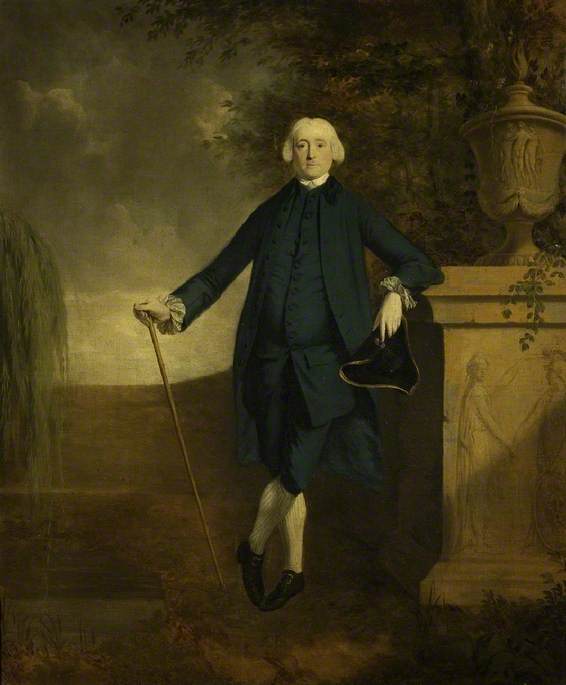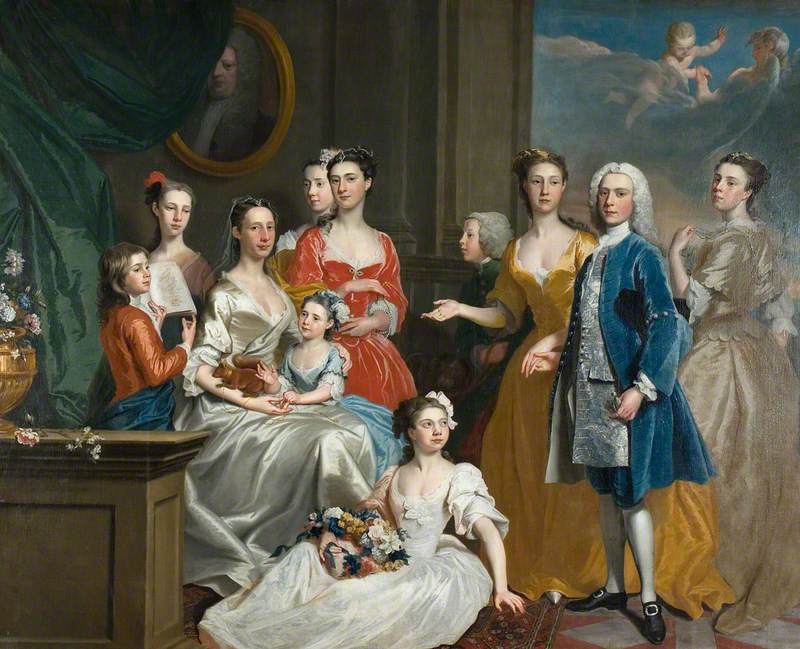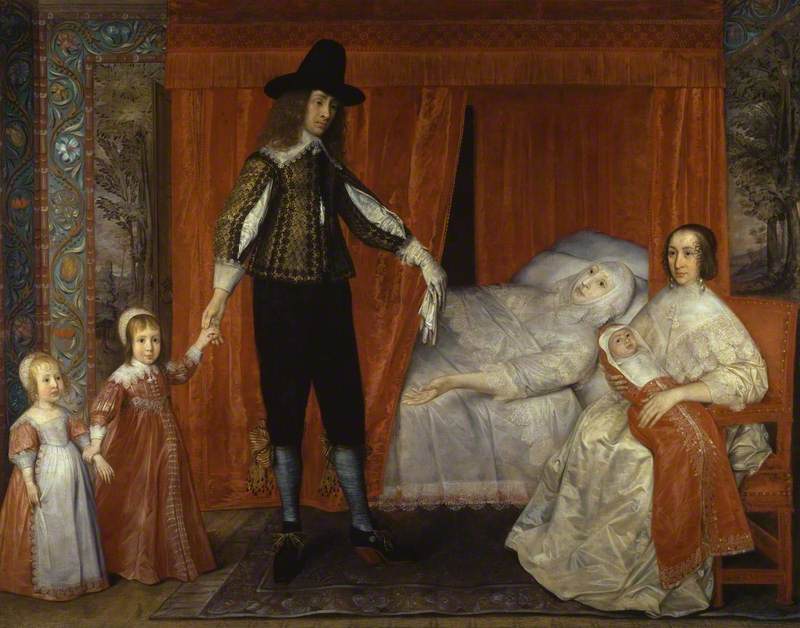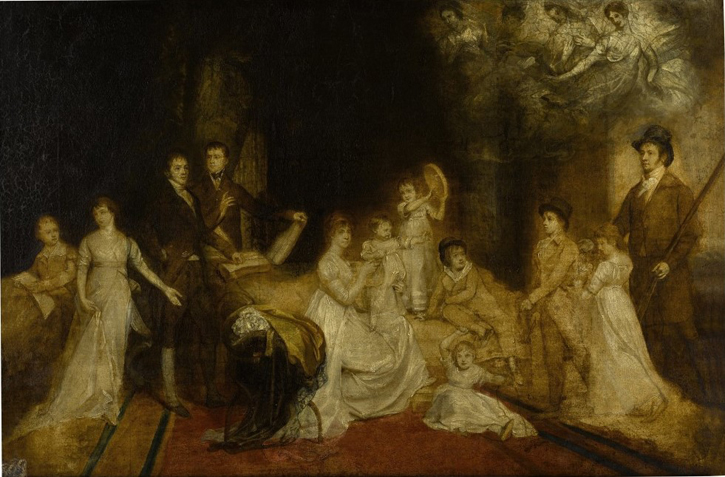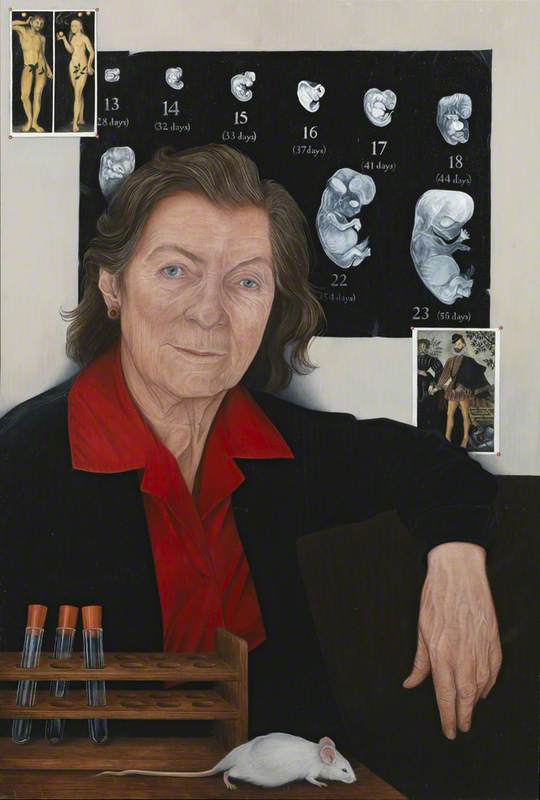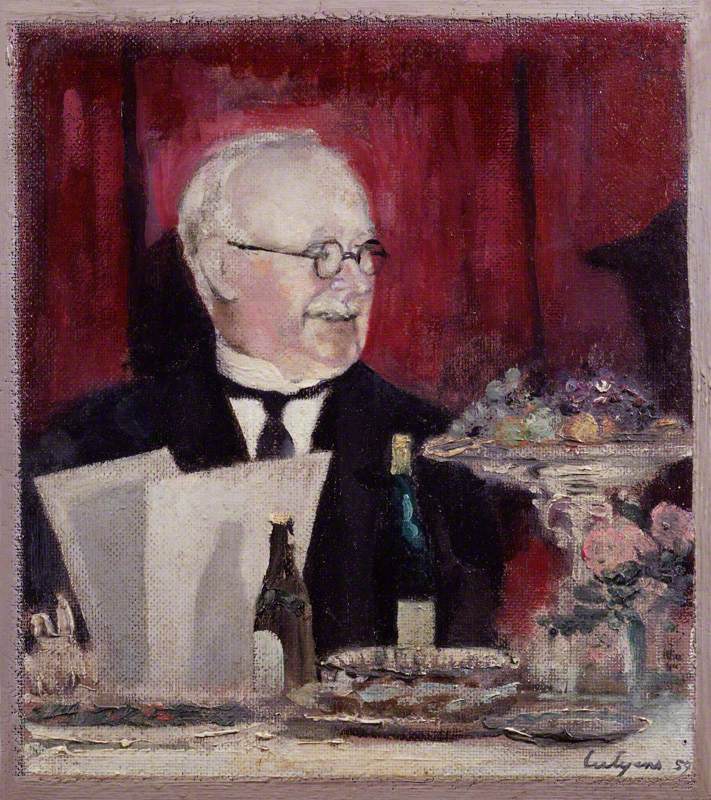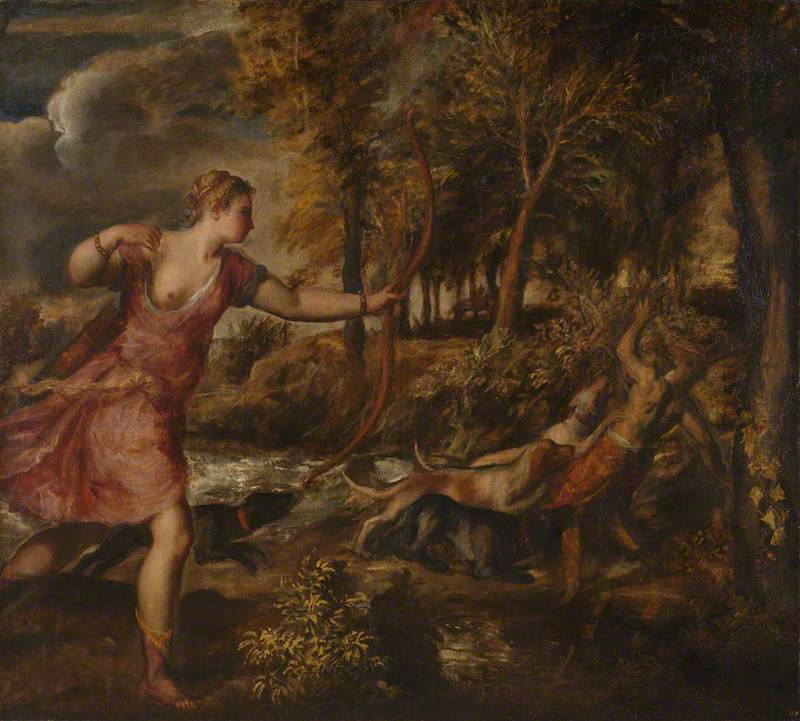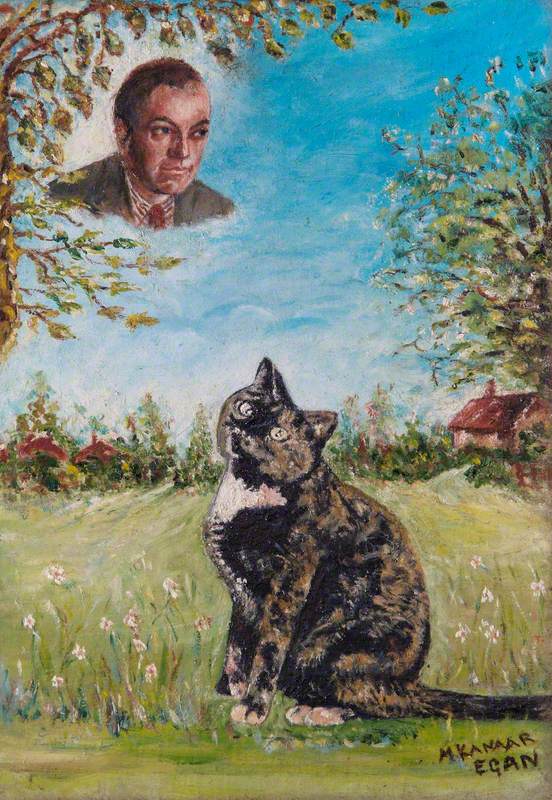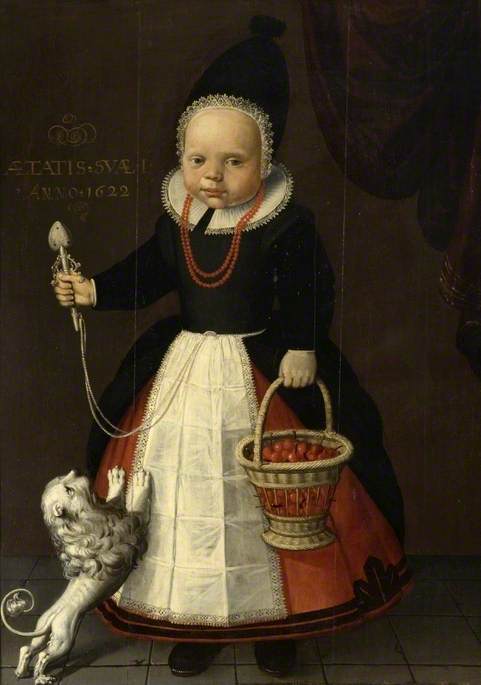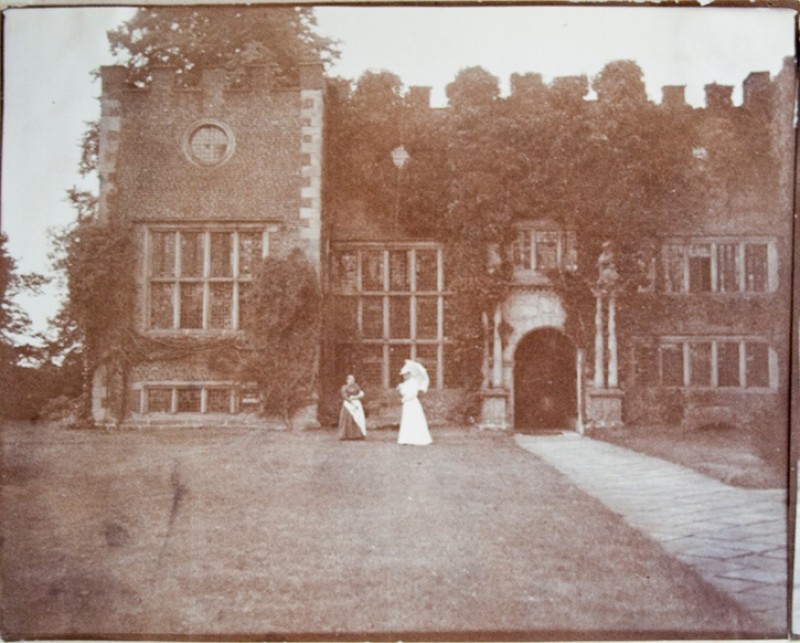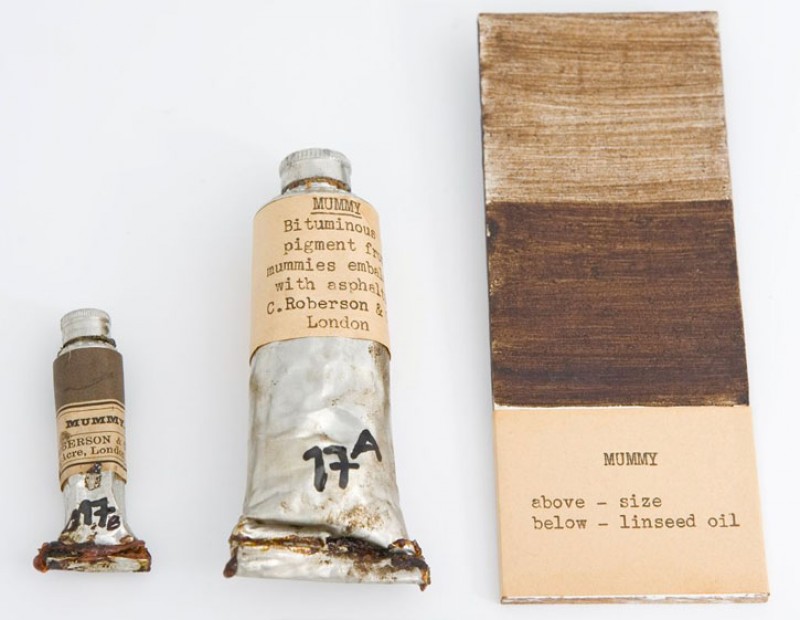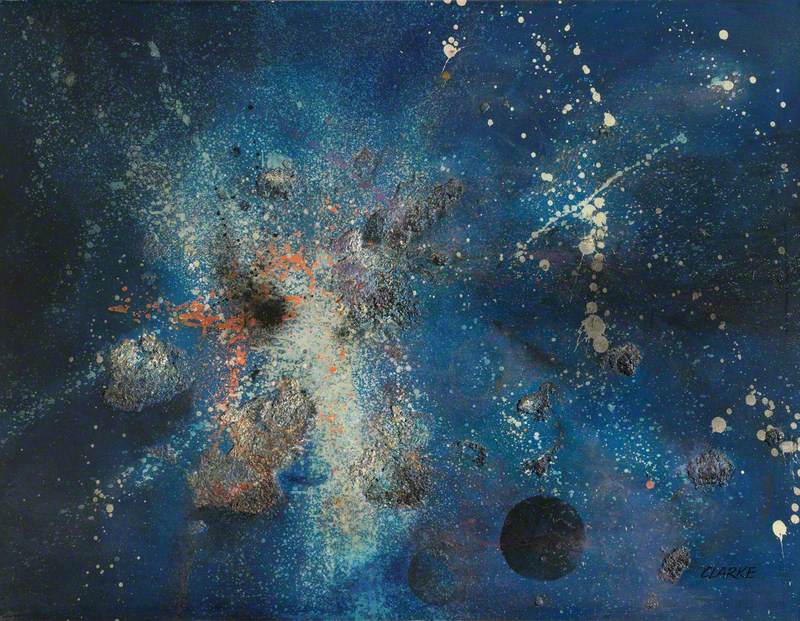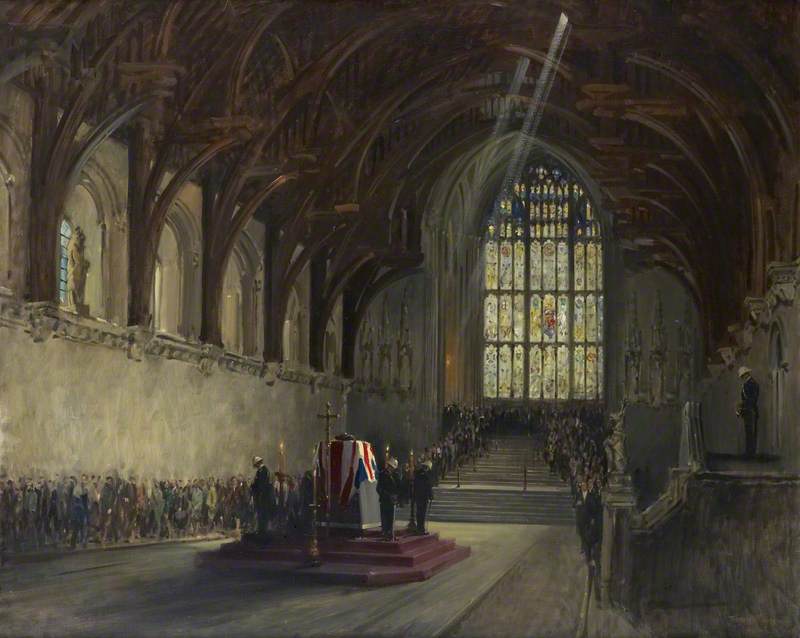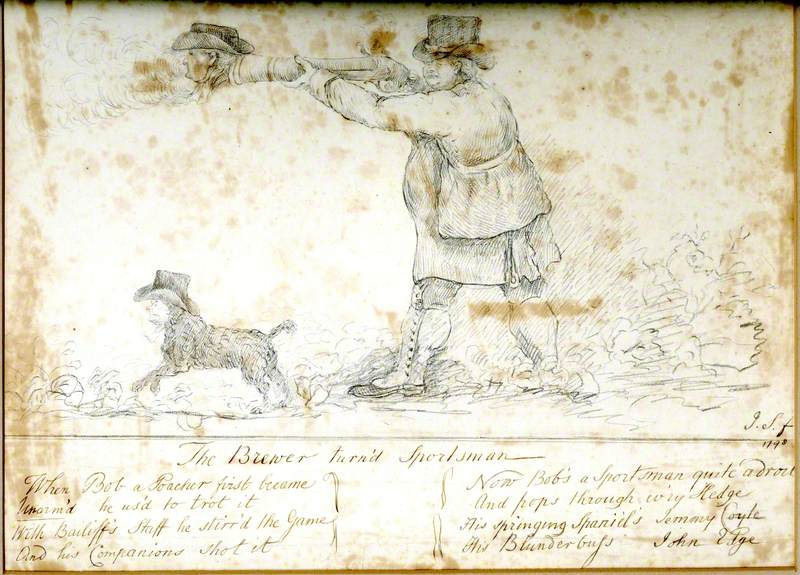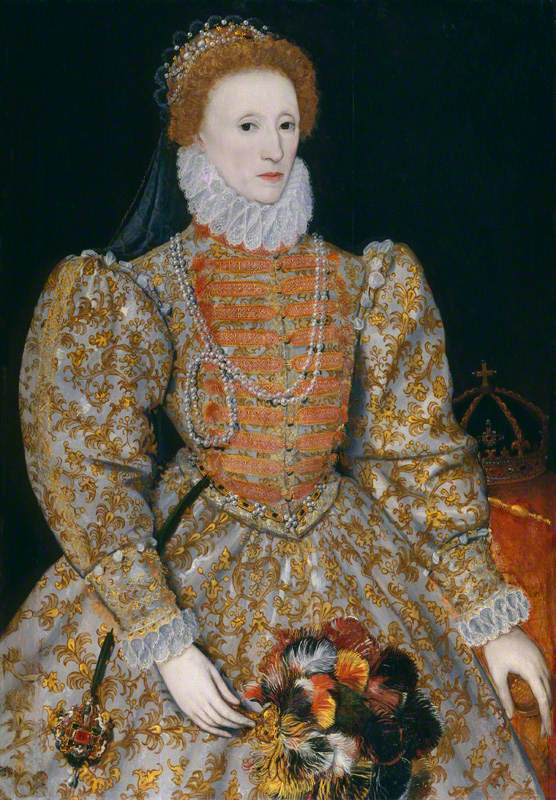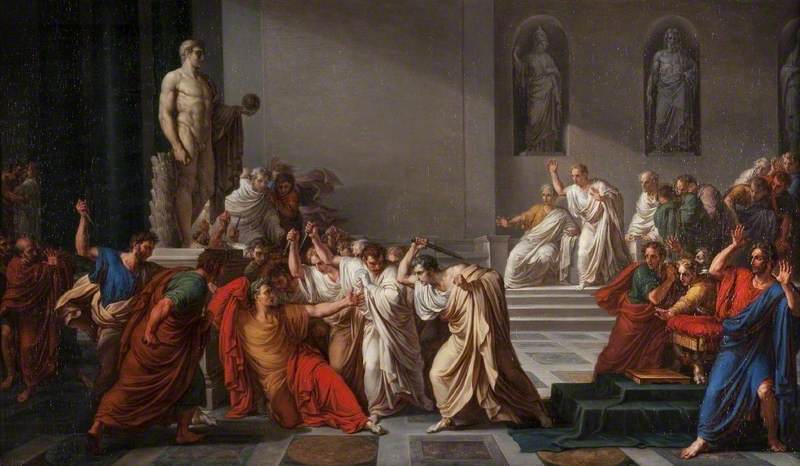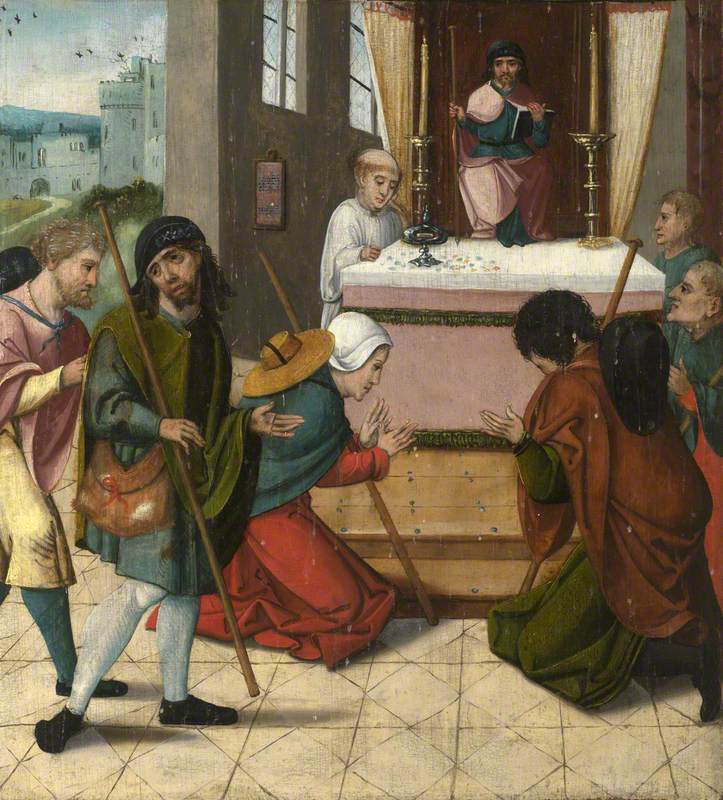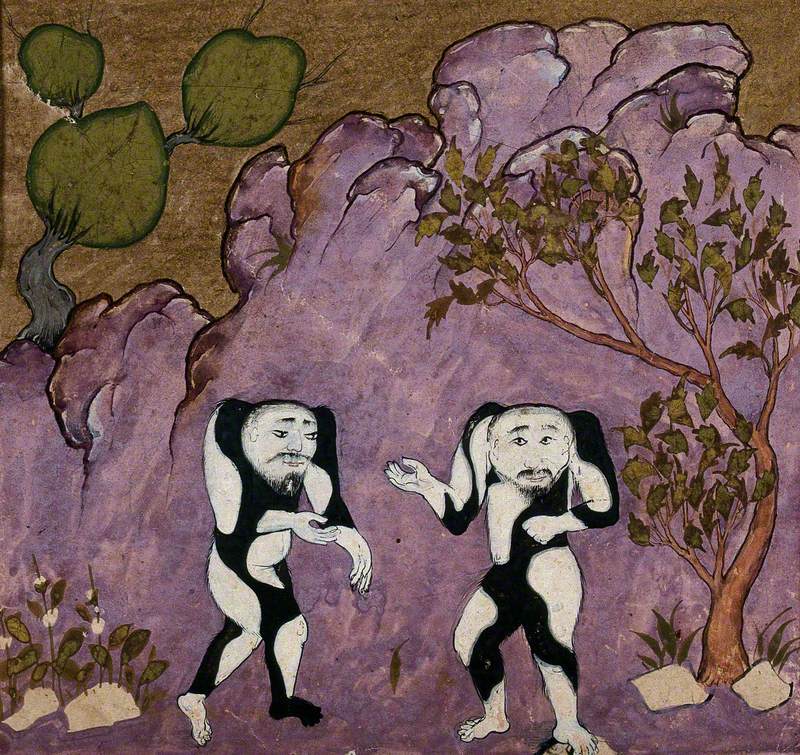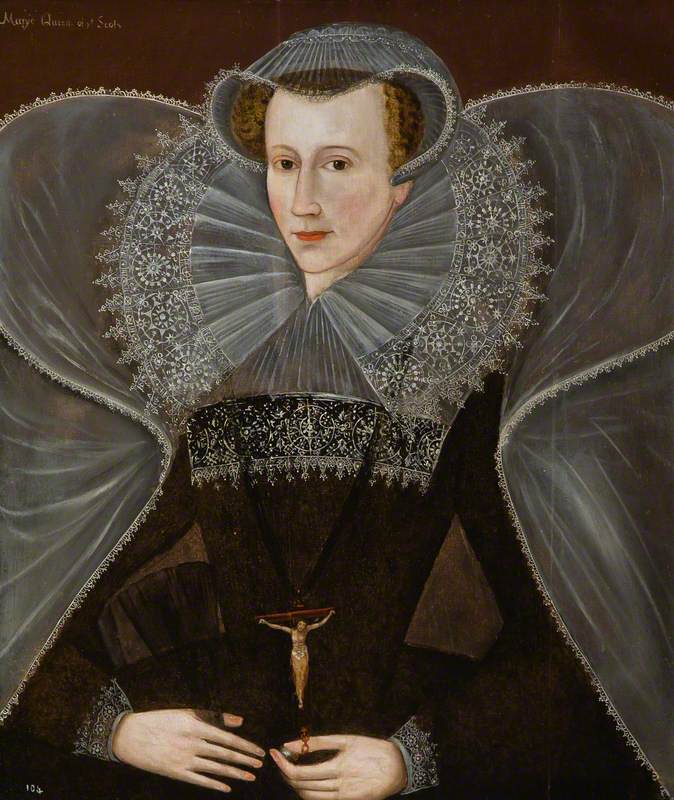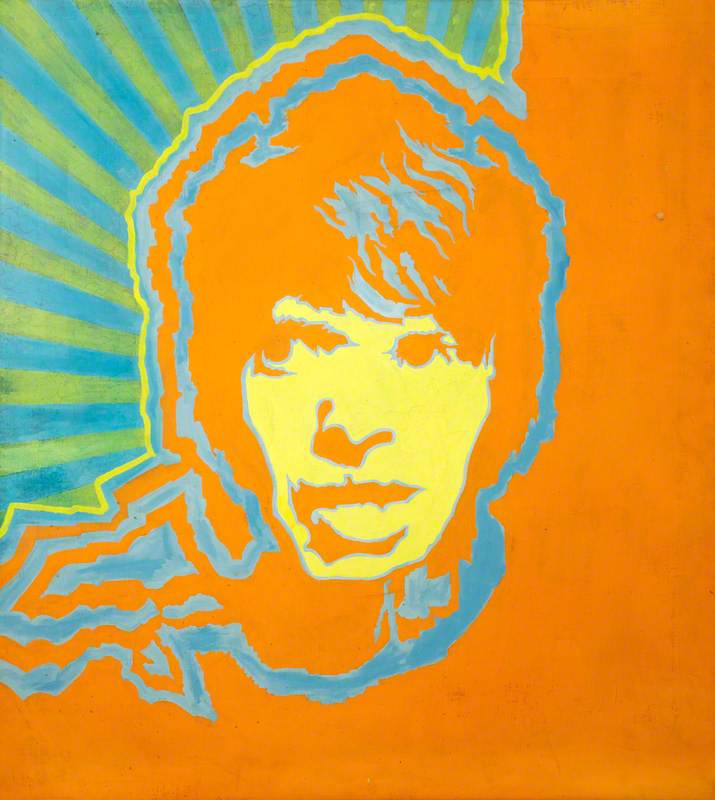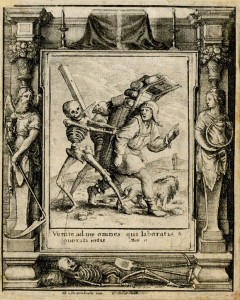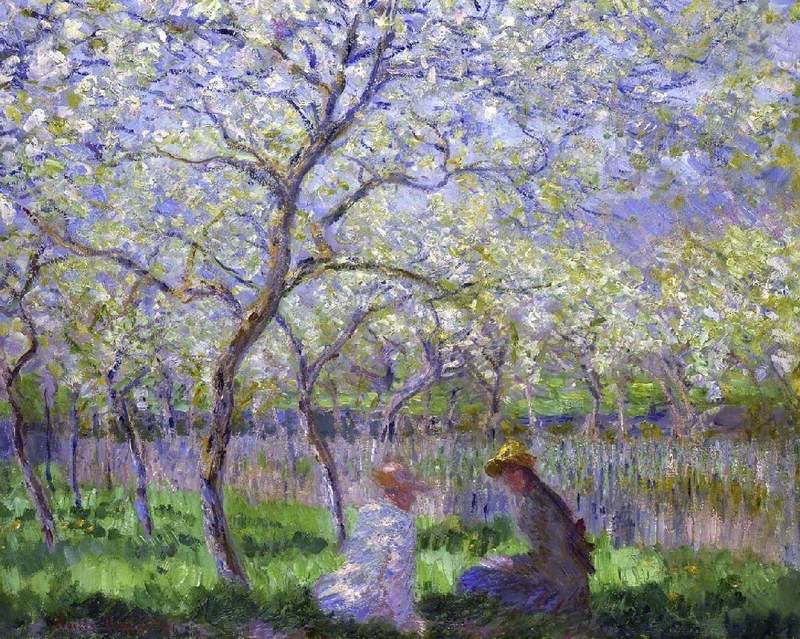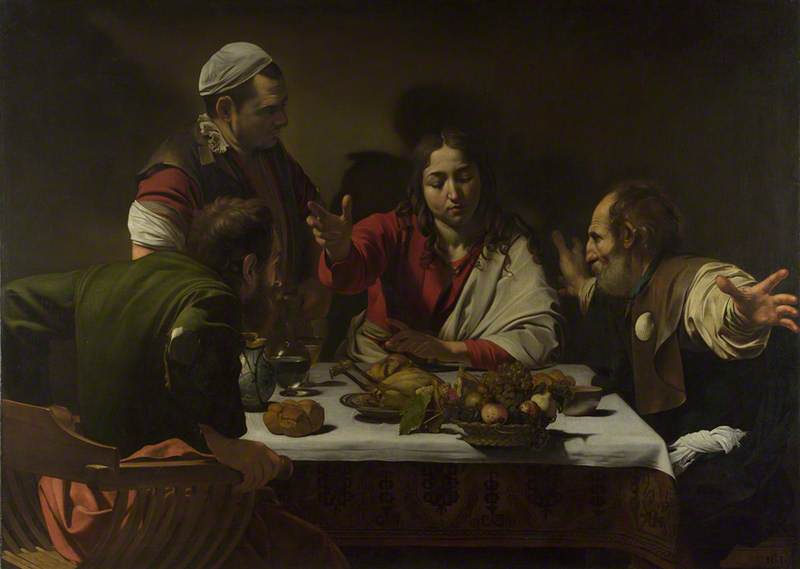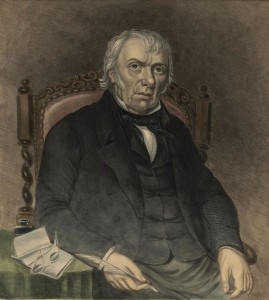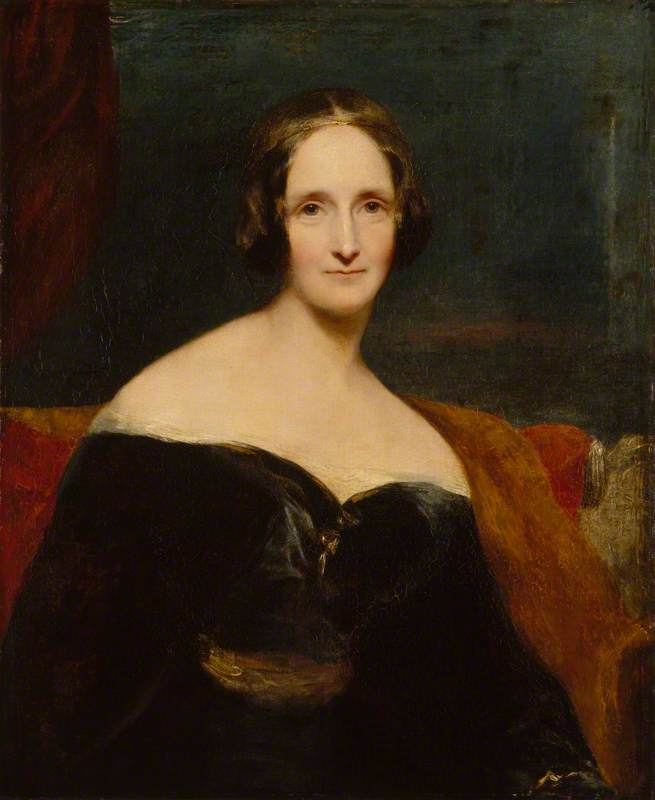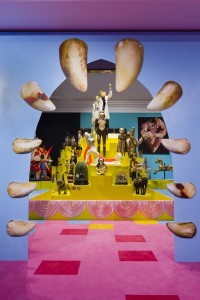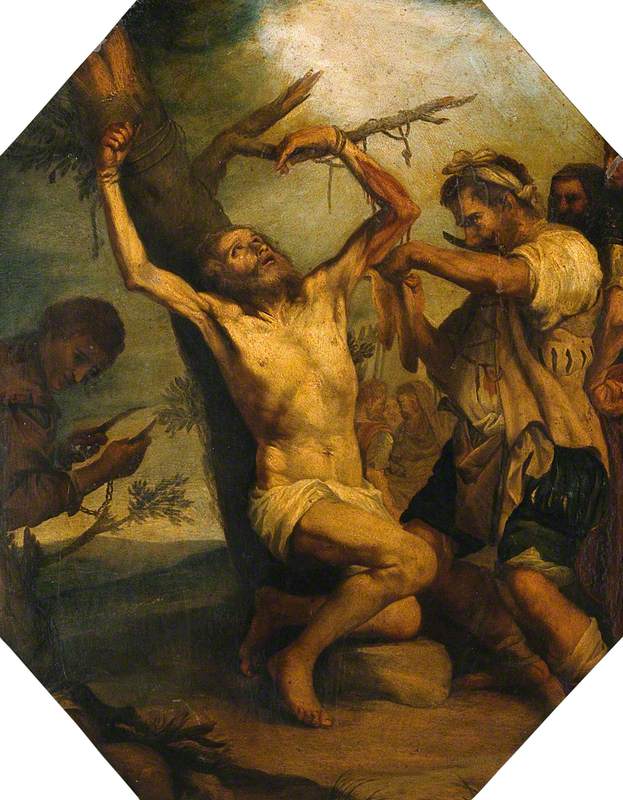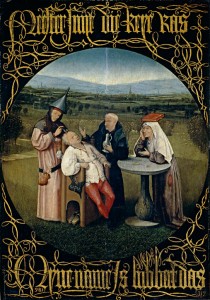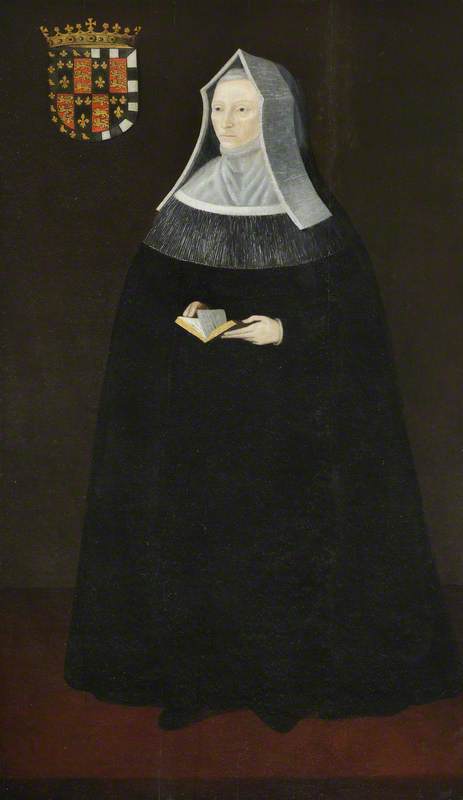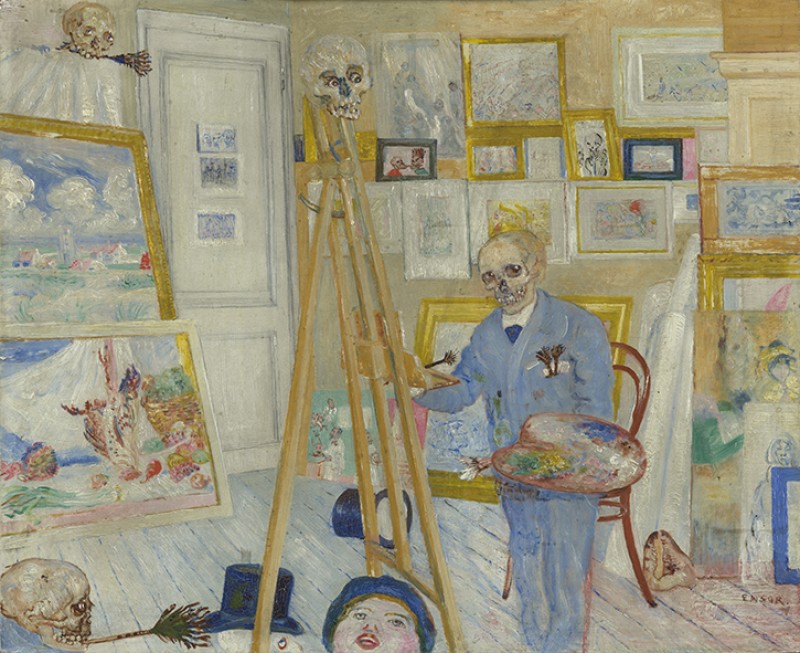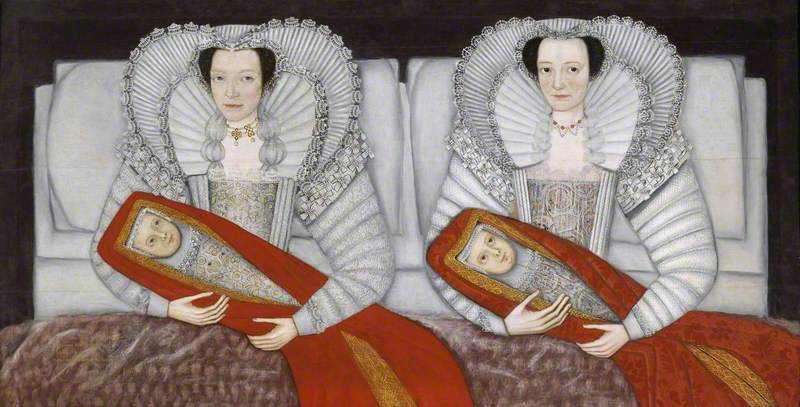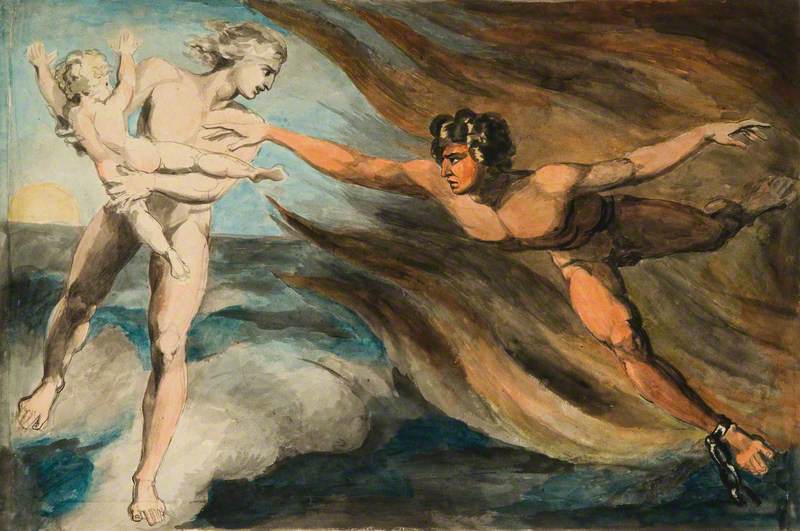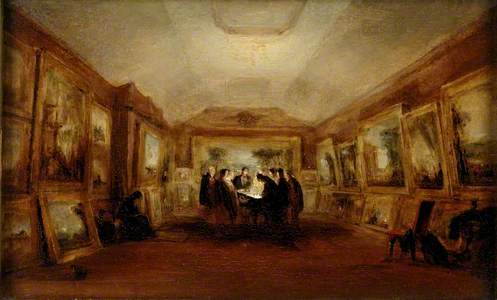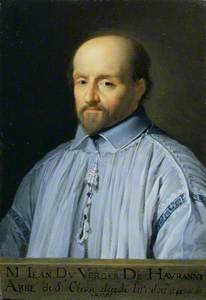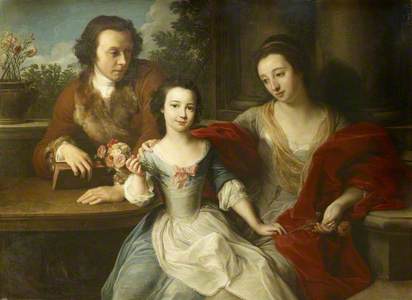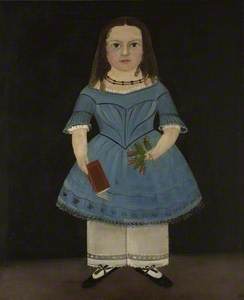We can learn a lot from looking at portraits of dead people, or 'posthumous portraits' to sound less ghoulish. If you read between the brushstrokes and know what to look for, a posthumous portrait can reveal cultural attitudes to death in a particular time and place.
Going, going... gone
Portraits of the deceased can seem shocking today, particularly those of children.
The Infant The Honourable Felton Hervey (3 July 1710–16 July 1710), Laid out in Death
1710
Joseph Brook (d.1725) (possibly) 
Why would you want to remember the gloomy event of a death? It is hard to imagine viewing these severe and painful images as an act of reverence, but many early examples were made when having a portrait created wasn't a common occurrence, and people were in more frequent contact with the dead and dying. If someone got sick and the prognosis wasn't good, it was time to gather together and perhaps call for the local portraitist to come to the afflicted person's bedside to immortalise their face in paint – while they were still around.
William Juxon (1582–1663), Archbishop of Canterbury, on His Death Bed
17th C
British (English) School 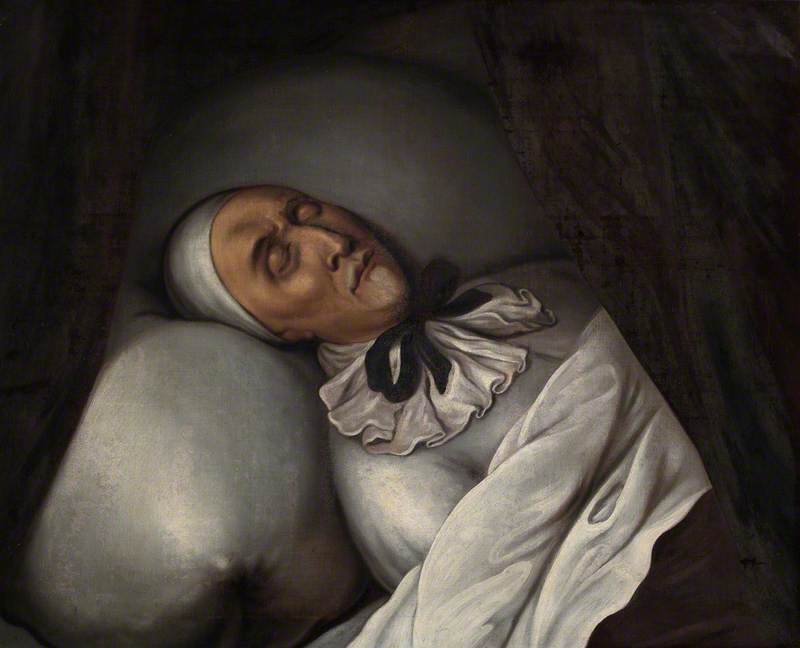
The subject above still has some colour in his face, in contrast to the white linens – though the black bow and pained expression is a reminder that William Juxon is not long for this world. Centuries later, looking at the dead and dying becomes more taboo: views of people after death, or 'lying in state', tend to be wide-angle scenes that put heavy emphasis on the grandeur of the surroundings.
Turner's Body lying in State, 29 December 1851
post 1851
George Jones (1786–1869) 
This view of The Last Moments of HRH the Prince Consort was a little too close to the death bed: Queen Victoria was horrified by its existence and wanted to have the picture destroyed (but it survived and was bought by the collector Henry S. Wellcome).
Symbols and clues
Most posthumous portraits show the person as they looked when alive.
An Allegorical Posthumous Portrait of Algernon Sidney (1622–1683), en Grisaille
c.1700
Dutch School 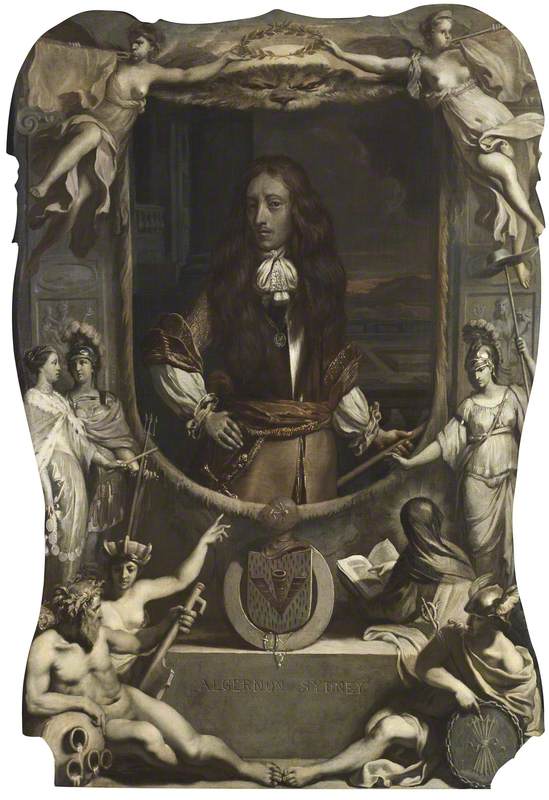
For those of higher social standing, there were usually other portraits a posthumous work could be based on (unless you were the abbé de Saint-Cyran, who refused to have his portrait taken during his life – the original artist worked from a death mask).
The abbé de Saint-Cyran
c.1644–1654
Philippe de Champaigne (1602–1674) (after) 
An image made after death can emphasise a person's worthy attributes, or the subject made into an icon, surrounded by symbolism.
Memorial Portrait of Sir John Harpur (1616–1669), 2nd Bt
c.1670
British (English) School 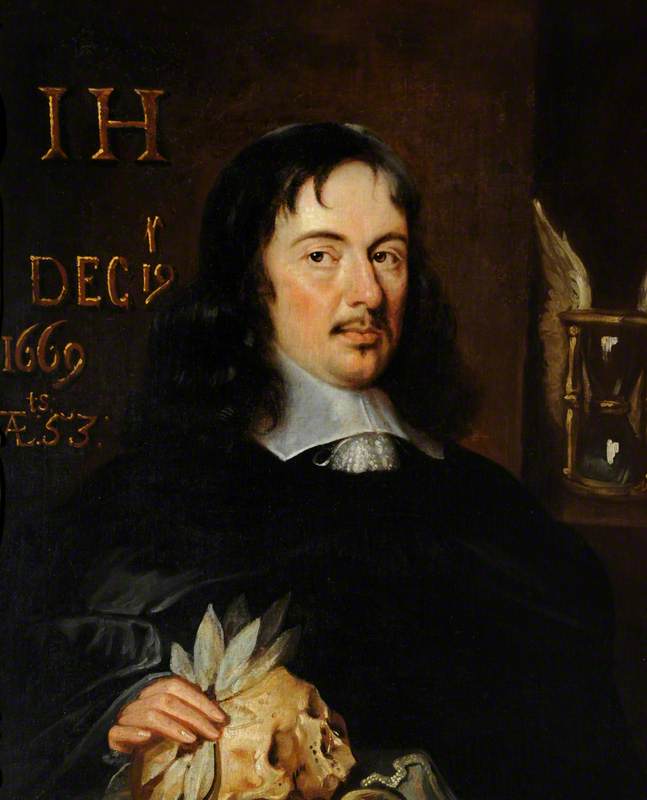
It is sometimes hard to spot a posthumous work unless symbolism has been used – for example, stopped clocks or hourglasses (as in Memorial Portrait of Sir John Harpur, above), wilted roses, departing ships, obelisks, using the colours red, white and black together, or a weeping willow.
My research into the death date of Francis Page of Newbury came up with little, though I wonder if the drooping willow branches in this portrait signify the work is posthumous? (Art Detectives: let us know if you have a clue.) With only basic information, viewing portraits such as these can prove speculative.
Though discovering a portrait is posthumous can bring about a fresh appreciation of the work. In 2014, Art Detectives identified an unknown soldier as Second Lieutenant Paul Chancourt Giradot, killed in 1916. After the discovery was publicised, more information came to light: the artist was likely the deceased's mother, Mary Jane Girardot. Mary also immortalised his portrait in a church's stained glass window.
Second Lieutenant Paul Chancourt Girardot (1895–1914), 1st Bn OBLI
c.1916–1918
Mary Jane Girardot (c.1863–1933) (attributed to) 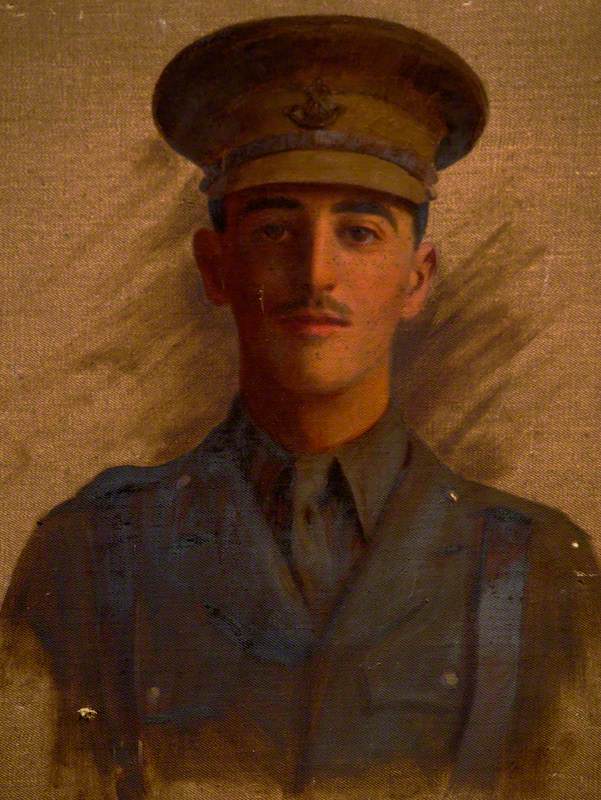
With posthumous portraits made to revere departed family members – particularly children – the tone can read as romantic and wistful, with the subject taking on a heavenly hue.
Dearly departed: children and families
After the sudden death of nine-year-old Barbara Anne Barrett-Lennard, her parents went on the Grand Tour as a distraction from their grief. Whilst in Rome in around 1750, they met the painter Pompeo Batoni. Batoni painted the glowing, angelic likeness of Barbara Anne from a miniature the couple had brought along on their travels. The expression of longing the artist captured on the mother's face is almost painful to view.
Some posthumous portrait commissions can cross into otherworldly territory, combining both portraiture of the living with the symbolism of the angel or cherub. Joseph Highmore's The Family of E. Lancelot Lee acts almost as an inventory of all beloved by Lee: the large family, heirlooms, a squirrel on a golden chain, and pet mastiffs are all presented in the foreground, with a child who died in infancy floating with angels in the sky beyond.
With other well-documented art, we know enough to recognise when a scene, presented as reality, has been made with liberal artistic licence. The Saltonstall Family by David des Granges shows Sir Richard Saltonstall with two children, and his second wife seated with a baby. The pallid figure lying in the bed is likely his first wife.
The richly wallpapered room and sumptuous drapes give a celebratory air to the painting, though in a modern context, it's all quite strange. It's hard to relate to the optimistic candour of Sir Richard when commissioning this display of family unity: in reality, had the first woman in the bed not died, the living wife (and the new infant) would not be sitting in the chair. Instead, the two women cohabit the picture amicably.
In a later story, John Singleton Copley worked doggedly for years on a group portrait of the Knatchbull family. The painter included Knatchbull's deceased first wife as an angel, but when nearing the end of the painting, his second wife also died. Copley made room for the second wife as another angel (before a third wife became pregnant: Knatchbull then insisted space be made in the composition for the newborn).
As we can understand from Copley's difficult commission, it's not easy painting the dead. For history's portraitists, particularly struggling artists, working directly with a corpse was not unusual – in fact, the ghoulish task would usually be left to poor young upstarts.
Advice to makers of Victorian posthumous daguerreotypes (a close cousin of the posthumous portrait painter) reveals that in order to position the body in a semblance of liveliness, the photographer may need to open the eyes of the deceased. But 'this you can effect handily by using the handle of a teaspoon', advised Charlie E. Orr.
Other artists used calipers to take facial measurements, or worked from living relatives who looked similar. Relying on poorer artists to undertake this undesirable work may explain the crude naivety, particularly in North America, of many posthumous paintings: see the flattened perspective of the Ambrose Andrews' The Children of Nathan Starr (the youngest of whom died in infancy, possibly before the painting was made).
The Children of Nathan Starr
1835, oil on canvas, 72.1 x 92.7 cm by Ambrose Andrews (1801–1877) 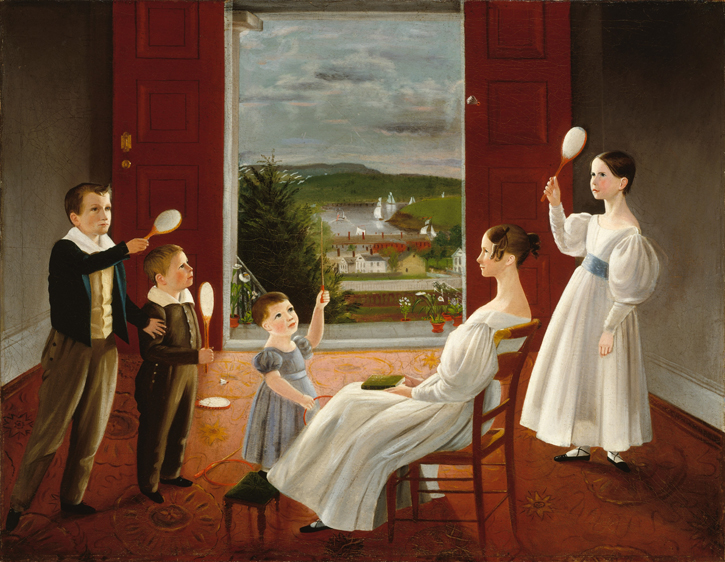
Girl in Blue, by William Matthew Prior, could be the result of some such commission: Prior's solemn children on Art UK are all the more haunting when one learns the artist may have lost a wife and six children by 1848.
Contemporary posthumous portraits
Now, most people rely on photographs to remember the deceased. Yet occasionally painters are asked to commemorate a deceased person, and in doing so face their own challenges. The artist may have many source photographs to work from, but this also means the commissioner may expect a photorealist result, and have a very emotional reaction to the project.
Today's posthumous paintings tend to be celebratory commemorations – such as in the case of geneticist Anne McLaren's portrait at The Royal Society. Smiling casually in front of a chart of human embryonic development, the painting gives the impression of a life rich with achievement.
These commissions are a stark contrast to posthumous artworks made for personal reasons. Contemporary works are often by bereaved relatives of the subject, wanting to produce a lasting emblem of the character now departed: Robert Lutyens painted his father, Edwin, from a photograph because the artist felt every other portrait made his father look 'over-serious'.
Artists may also paint posthumous portraits as a form of therapy. The ritual of painting from life can be meditative and help an artist contemplate or work through difficult feelings.
Looking at many posthumous portraits for this article, I found Robert Oskar Lenkiewicz's Study of the Painter's Dead Mother the most difficult to view.
Study of the Painter's Dead Mother
1977
Robert Oskar Lenkiewicz (1941–2002) 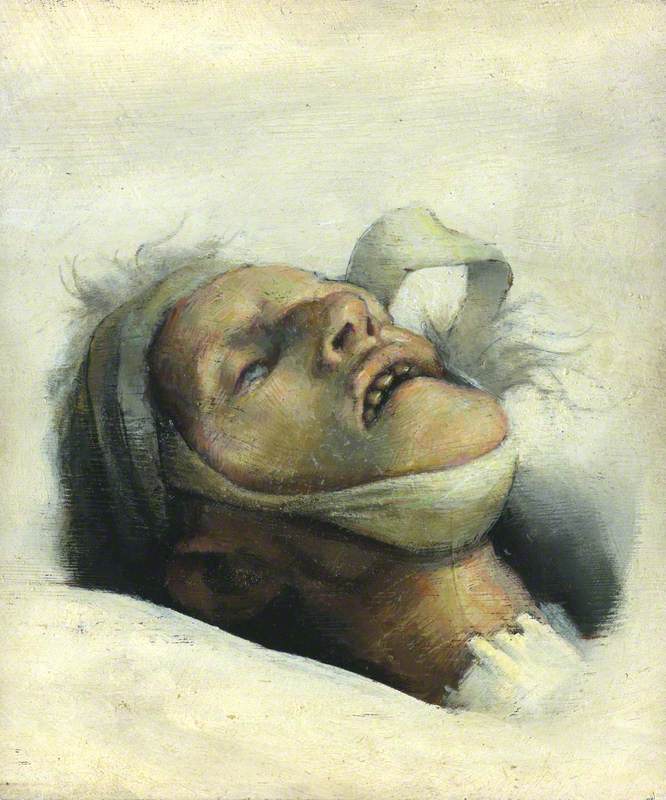
The dead pallor of the subject's skin is shocking – this hints that death is culturally alien to contemporary viewers. Perhaps in looking at something you become less frightened: a good reason to look closely at these complex portraits.
Jade King, Art UK Head of Editorial

